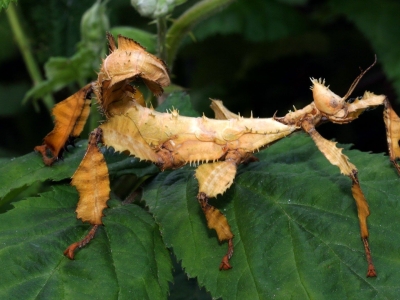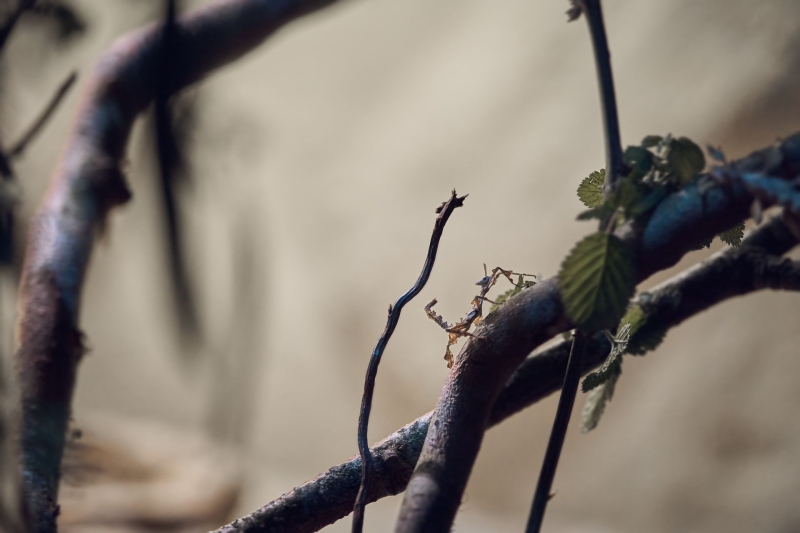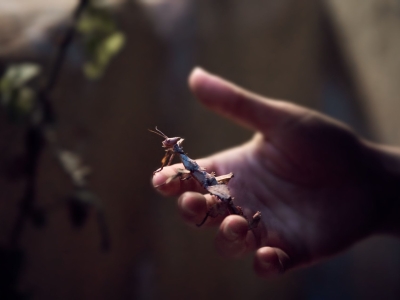Australian walking stick Extatosoma tiaratum
Animals in our sanctuary
groep Australische flappentakken

The Australian walking sticks come from a Dutch Zoo and found their new home at De Zonnegloed.
Where does he feel most at home?
The Australian walking stick is endemic to rainforests in Australia, with most of its range in eastern New South Wales and eastern Queensland, but it is also found in eastern Victoria (one old record) and South Australia (possibly introduced).
What's his favourite food?
They are herbivores and although they thrive on Eucalyptus which is their native food, they are also known to eat bayberry, bramble, hawthorn, hazel, oak, photinia, raspberry, rose, salmon berry (red or yellow) and guava.
Fun fact
Adult females are covered with thorn-like spikes for defense and camouflage. Their long, rounded bodies grow to about 15 cm (6 in) long. The females are further described as "heavy-bodied, brachypterous and having numerous spines and integumental expansions on the face and legs, including a tuft of spines on the conical occiput of the hypognathous head". As mentioned, the wings of the female are too small for flying, especially when she is gravid.
Exhibiting the sexual dimorphism of many similar insects (particularly other phasmids as well as mantises), males are small and thinner, growing only about 10 cm (4 in) in length and have three ocelli. Males lack the thorny growths except for spikes around their faces. They have long wings and are good flyers who readily take to the air if disturbed or in search of females.
Both sexes, when threatened, adopt a threat pose, standing on the front and middle legs, pointing their abdomen up or to the side in a sort of "scorpion" pose. They fold back their legs to defend themselves if anything comes in contact with their abdomen; the pincer movement with the sharp spines on the rear legs can puncture human skin. Adults make clicking sounds and can release a defensive odor reminiscent of toffee. Males may attempt to startle predators by flashing their wings open.
The Australian walking stick makes use of both passive and active camouflage. It adopts a curved pose when it hangs inverted amongst foliage with "its highly procryptic abdomen curled over its back."[ Individuals vary in color and appear brown, mottled brown, green, reddish, cream, yellowish, or entirely white.
They actively sway back and forth or side to side when disturbed or when there is a gust of wind, with a frequency distribution like foliage rustling in the wind. The swaying behaviour may be motion crypsis, preventing detection by predators, or motion masquerade, promoting misclassification (as something other than prey), or a combination of the two.
Newly hatched E. tiaratum nymphs are ant mimics and resemble the insects in whose nest they are born. Their aposematic pattern—orange head, white collar, the rest black—mimics the ant genus Leptomyrmex and makes them appear toxic. Although most adult stick insects are notoriously slow, these nymphs are speedy, active, and quickly make their way to the trees. Their locomotion slows when they moult into their second and subsequent instars. Females acquire their distinctive spiky appearance through additional moults.
Adopt this Australian walking stick




